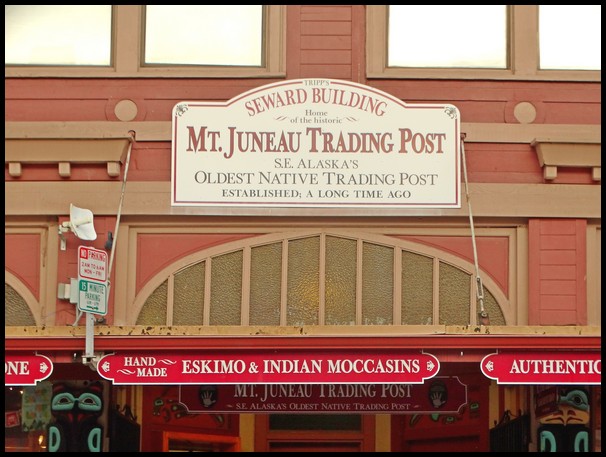
9 Surprising Things about Juneau – Alaska
I have been staying in Juneau, Alaska for six full weeks thus far and have three more weeks to go!
I didn’t actually know anything about Juneau before I came up here. But since then, I’ve learned many, many interesting and surprisingly things about this wonderful little corner of Alaska. I previously wrote an introduction to Juneau here.
This article covers some of the same interesting information, but in a perhaps easier-to-read, list-style format. Without further ado, here are 10 rather surprising facts about little ole Juneau…
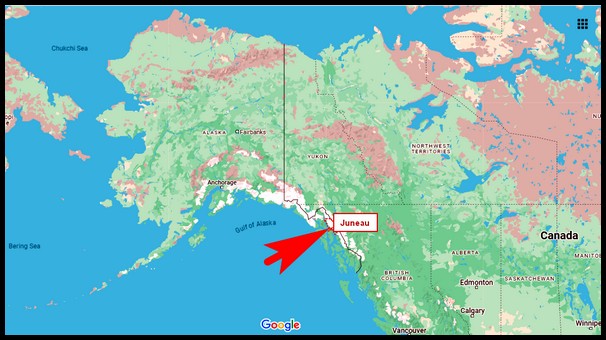
1. Juneau is the capital of Alaska
Small and remote Juneau town is not an intuitive capital for the huge state of Alaska. Larger, more central and famous Alaskan cities, like Anchorage and Fairbanks would make more sense as capital cities.
Juneau is just a tiny town of about 36,000 permanent residents. And it’s located in remote Southeast Alaska, often called the Inside Passage, which is quite far south of the bulk of Alaska state. Yet Juneau is indeed Alaska’s capital.
Juneau’s capital standing came about historically. In fact, Juneau was the capital of the Territory of Alaska long before Alaska even became a state. Its title simply transferred over with statehood.
It makes a bit more sense when you understand the history of Alaska. From the time of Russian fur traders, beginning in the 1700s, and through the arrival of Americans & Canadians during the huge Klondike Gold Rush in the late 1800s, the Inside Passage region was the center of those activities.
Originally Sitka was the capital and center of the Russian community. As gold mining took over as the main source of money in the region, the capital was transferred to Juneau. And Juneau has simply remained the capital ever since.
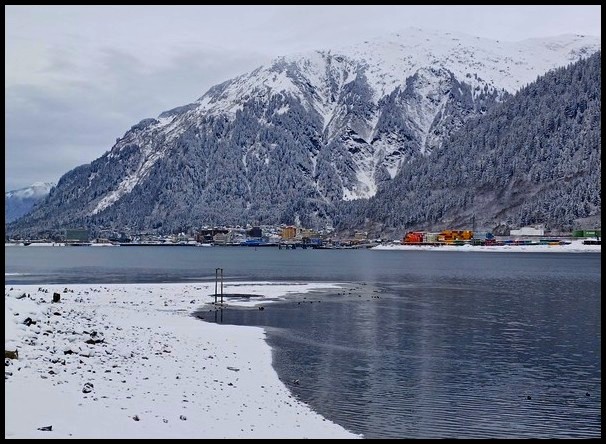
2. There are no roads to Juneau
Although Juneau is situated on a narrow strip of flat land on the mainland of North America, there are no roads going in or out of Juneau. That’s because of the hefty mountains running up and down the coast and right behind Juneau. It’s not just the vast mountain range that separates Juneau from the rest of the mainland. It’s the massive Juneau Icefield that covers the top of the mountain ranges. The icefield covers 150,000 square miles, runs 30 miles north to south and 30 miles east to west. That prevents the construction of any roads in/out of Juneau.
The only way to reach Juneau is by flight or ship.
3. Juneau is the only US capital city that cannot be accessed by road
This gives Juneau the distinction as the only US capital that cannot be reached by roads.
4. Juneau is situated farther north than all of UK, China, Japan and Mongolia…
Everyone knows that Alaska is located in the extreme far north of the globe. It even touches on the Arctic Circle in its northernmost reaches. But even Juneau, which is situated quite far south of the bulk of Alaska, is located farther north than almost all other inhabited regions of the globe!
Juneau is situated at 58.3° North latitude. That’s farther north than most Canadian cities. It’s farther north than the entire island of UK, including Scotland, the island’s farthest country. Edinburgh, for instance, is at 56° North and Inverness at 57.4° North.
Juneau is also farther north than most of western Europe, though not Sweden, Norway or Finland.
However, rather amazingly, Juneau is farther north than Moscow ( 55.7° North), though it’s not farther north than Siberia or much of Russia.
Surprisingly, though, Juneau is situated farther north than all of Japan, including its northernmost island of Hokkaido. It’s also farther north than all of China and Mongolia.
A few key places that are farther north than Juneau include most of Sweden (Stockholm at 59.3° North), Finland (Helsinki at 65° North) and all of Iceland (Reykjavik at 64° North).
On a more personal note, Juneau is the farthest north I’ve ever been on Earth thus far! My previous most northerly visits were at Hokkaido’s northernmost tip (Wakkanai at 45.2° North); Manchester, England at 53.4° North; Krakow, Poland at 50° North; and Vancouver, Canada at 49.2° North.
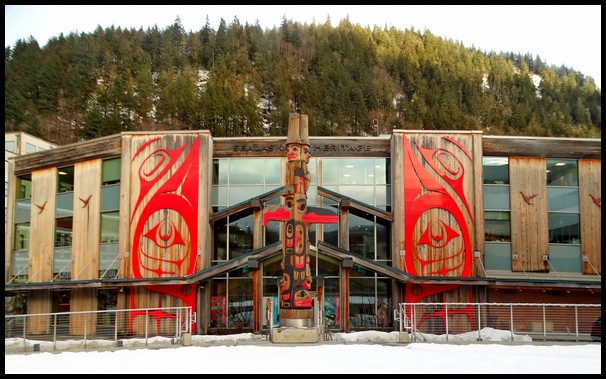
5. Juneau has a very international population
Before white men arrived in the region, Juneau and the Inside Passage region were inhabited by three major native tribes: Tlingit, Haida and Shinshiam. Descendents of these indigenous people still live in and around Juneau.
In later years, Americans, British, French and Canadians came as gold prospectors. Chinese and Japanese came to participate in the mining industry and support businesses. Filipinos came to work in the fishing industry.
In more recent decades, Jamaicans and Polynesians, especially from Tonga, migrated to Juneau. Other individual Americans, Canadians and Europeans have also migrated to Juneau, often beginning with a vacation to Juneau, during which time they fell in love with the place.
Thus, Juneau today is a huge melting pot of people and cultures from all over the world.
6. Juneau is the hub for cruise ships in SE Alaska
Alaska’s Inside Passage is especially famous for cruise ships to Alaska. They come to witness glaciers, icebergs, the temperate rain forest, salmon spawnings in spring, black and brown bears, whales and other marine creatures.
Juneau is the main hub for all these cruise ships. It’s said that all cruise ships stop in Juneau. Most ships also stop in other key towns in the Inside Passage, especially Ketchikan and Skagway.
But Juneau boasts nearby Mendenhall Glacier, gold mining history and mine tours, a historic downtown, flights and helicopter rides above Juneau Icefield, a
cable car ride to the ridgetop and other great attractions.
In 2023, over 1.6 million cruise ship passengers visited Juneau between May and October.
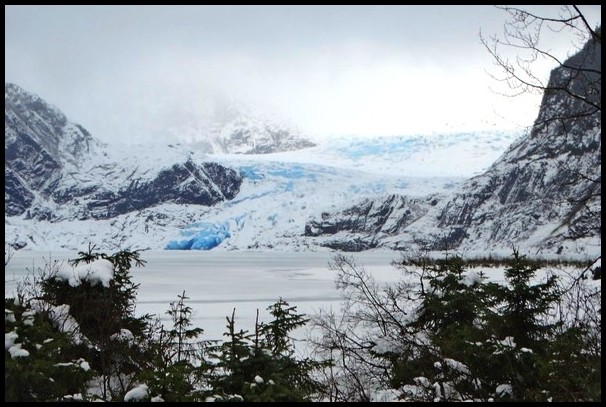
7. Alaska’s most easily accessed glacier is just outside Juneau
Dramatic Mendenhall Glacier and its adjacent visitors center, is situated just 12 miles outside of downtown Juneau and the cruise ship port. It’s the easiest glacier to access in all of Alaska.
Visitors can get there by public bus, taxi, car or tour. As soon as one approaches the visitor center parking lot, Mendenhall Glacier is already visible, with the glacier face resting on the far shores of Mendenhall Lake.
There’s a spacious, covered outdoor viewing platform and indoor viewing from the visitors center. No hiking required.

8. The Klondike Gold Rush occurred at Juneau
Most Americans and Canadians have at least heard of the great Klondike Gold Rush, at least during school-day history lessons. Like me, though the details might be vague.
As it turns out, the Klondike Gold Rush was started and based right in Juneau. According to most historical reports, in 1880 a local indigenous leader showed gold in a stream, located in a valley just above Juneau. That quickly kicked off the huge rush by prospectors to Juneau, searching for quick wealth by gold discovery.
It didn’t take long for the prospectors to establish a small town. As gold panning proved extremely profitable, Juneau great very quickly and soon had all the modern conveniences like electricity, phones and indoor plumbing. A wealthy class developed with great luxuries such as eleaborate luxury homes and annual balls.
For a short time, Juneau was the World’s Capital of Gold.
Just as quickly, it all faded away. By 1917, most of the mines had to close, due to mine collapse, avalanche, WWI recruiting men to combat and falling gold prices. One mine staggered on until the 1960s, but then it too was forced to close as gold was depleted.
9. Juneau is situated within the world’s largest temperate rain forest
Tongass National Forest covers most of South East Alaska, the Inside Passage and the Alexander Archipelago. It’s the world’s largest temperate rain forest. Most rain forests are located in the tropics and are very hot and humid. Temperate rain forest are rare.
Tongass N.F. Is also America’s largest national forest. It covers 16.7 million acres. The majority of trees are evergreen, primarily Western Red Cedar, Sitka Spruce and Western Hemlock. The forest is home to a huge diversity of animals, fish and birds. They include brown and black bears, five species of salmon, Bald Eagles and many mammals.
Juneau is located smack in the middle of the vast Tongass N.F. The most telltale sign of the rain forest are the evergreen trees covered in dense trails of lichens, looking much like the mosses hanging off trees in Georgia and Florida. It’s a beautiful, fertile and unique habitat.
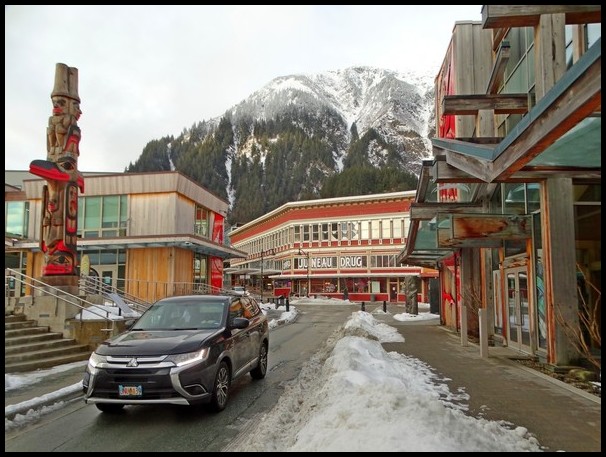
Summary
As you can see, little remote Juneau is quite a big deal!
As Alaska’s capital, all legislative sessions and government business takes place there. As the region’s main cruise ship port, Juneau is swamped by well over 1 million passengers each season. Easily-accessed Mendenhall Glacier, just out town, is a huge tourist draw for both cruise ship passengers and independent travelers.
Juneau also has a very important history as the former center of the huge Klondike Gold Rush. Tongass National Forest, over 250 miles of hiking trails, glaciers and icefields and a small ski resort all attract visitors to Juneau throughout the year.
============================
You might also enjoy:
13 Intriguing Facts about Alaska
8 Great Reasons to visit Alaska in Winter
==============================

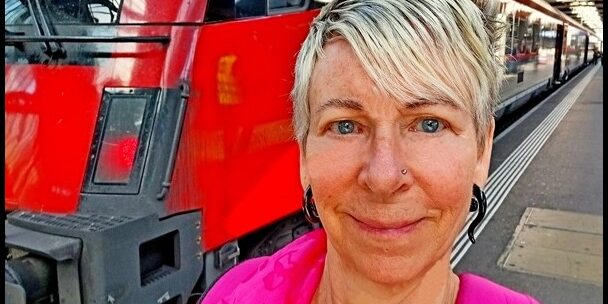





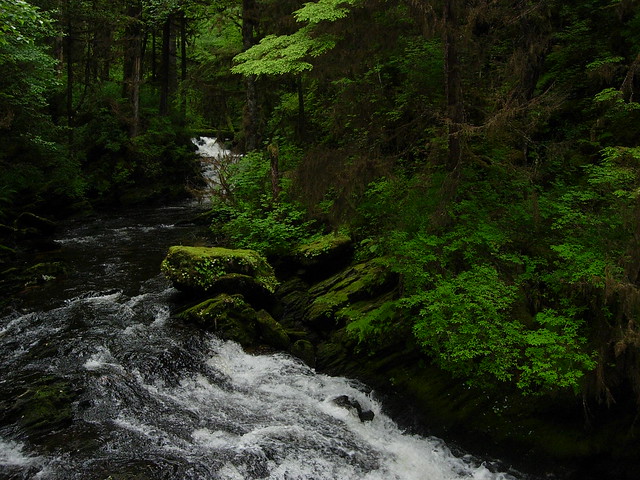


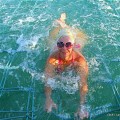
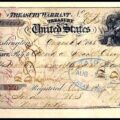

 Hi! I'm Lash, an American nomadic world traveler who's been traveling solo since 1998. I’m passionate about traveling the world nomadically and then sharing it all with you. I hope to inspire you to travel the world, to entertain you with tales from the road, and to help you reach your travel dreams. Welcome!
Hi! I'm Lash, an American nomadic world traveler who's been traveling solo since 1998. I’m passionate about traveling the world nomadically and then sharing it all with you. I hope to inspire you to travel the world, to entertain you with tales from the road, and to help you reach your travel dreams. Welcome! 



